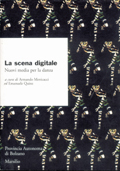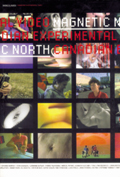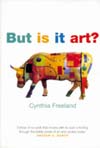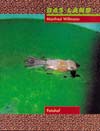|
|
|
Andreas Gursky
This is an elegant, large format catalogue, published on the occasion of Andreas Gursky’s first American retrospective, at the Museum of Modern Art in New York, curated by Peter Galassi. The volume reproduces, in full-page, color illustrations, the complete photographic works of this German artist, who was born in 1955 and studied at the Kunstakademie in Düsseldorf under Bernd and Hilla Becher, from the earliest pieces from 1984, such as Klausenpass, through the famous scenes of the overcrowded trading floors, to the more recent work focusing on high-tech industry, global markets, large tourist hotels, football games, and sporting events. The curator’s introductory text, aptly titled Gursky’s World, is of great interest as it gives both a historical and critical overview of Gursky’s work, with extensive photographic archival documentation, such as Peter Weller’s black and white images from the 1910s.
Andreas Gursky, Museum of Modern Art (11 West 53 Street, New York, www.moma.org), 2001, p. 196, 23 x 30 cm.
|

|
La scena digitale
In 1999, Armando Menicacci, professor in the department of dance and computer science at IPT of the University of Paris 8, and Emanuela Quinz, professor of Aesthetics in the Digital Arts at the University of Paris, curated the Bolzano Festival of Dance, of which this publication has been conceived as a record. It is a thick volume that gathers a great number of historical contributions and critiques that analyze the diverse forms of experimentation between body and machine. The texts are by, among others, Lev Manovich, Paolo Rosa, Elisa Vaccarino, Scott deLahunta, Flavia Sparacino, Thecla Schiphorst, Michèle Noiret, Robert Wechsler, Jean-Marc Matos, and Michel Bernard.
Armando Menicacci, Emanuela Quinz, La scena digitale. Nuovi media per la danza, Marsilio Editori ( www.marsilioeditori.it), 2001, p. 447, 15 x 21 cm.
|

|
Magnetic North
This is a publication produced for the program Magnetic North, organized by the Walker Art Center of Minneapolis and the Video Pool, Winnipeg, and curated by Jenny Lion, professor at Macalester College in St. Paul, Minnesota. The volume gathers together the early works of Canadian video art from the '70s on and follows the developmental process up to the present day, from Birthday Suit—With Scars and Defects (1974) by Lisa Steele, to Disaster (2000) by David Hoffos. More than forty artists, both past and present, who used the video medium in a variety of ways and for a variety of purposes are represented, with works ranging from innovative documentary to conceptual art, experimental narration, or performance. Besides the large number of critical essays by critics and scholars such as Peggy Gale, Victor Masayesva, Rebecca Baron, and George Lipsitz, also of great interest are the collected writings, texts, and testimonials of some of the artists.
Magnetic North. Canadian Experimental Video, Walker Art Center, Minneapolis, University of Minnesota Press (111 Third Avenue South, Suite 290, Minneapolis, www.upress.umn.edu), 2000, 383 pages, 16 x 23 cm.
|

|
Cynthia Freeland, But is it art?
The title of this work echoes the widespread question commonly asked by the public when faced with certain pieces of contemporary art, which appear to be merely shocking or strange “objects”. Referring to concepts culled from philosophy and art theory, Cynthia A. Freeland, a philosophy professor at the University of Houston, Texas, explains clearly, and often provocatively, why innovation, contradiction, and disputation are highly regarded within the wide-ranging sphere of contemporary art forms. The author’s strategy is to highlight the incredible range of expressive diversities in order to articulate the contemporary difficulty on realizing exhaustive theories.
Cynthia Freeland, But is it art?, Oxford University Press (Great Clarendon Street, Oxford), 2001, p. 231, 12 x 18 cm.
|

|
Manfred Willmann, Das Land 1981-1993
This new catalogue gathers together the photographic work of the Austrian Manfred Willmann, born in 1952. With the title, Das Land, which means the countryside, the artist does not intend to inspire idyllic or bucolic visions. Rather, Willmann creates images that question our actual relationship to nature and allude to our very distance from it. The photographs are restricted to the immediate vicinity of two houses: 26 Pongratzen and 14 Pongratzen, in the rural village of Gossradl, district of Deutschlandsberg, in the southern part of Western Styria, near the Slovenian border. The project began in the early ’80s, when Willman first came into contact not only with the area and the countryside itself, but also with the families that lived there and their work, their homes, friends and relations, ways of life, and routines.
Manfred Willmann, Das Land, Fotohof (Erhardplatz 3, Saltzburg, www.fotohof.or.at), 2000, 143 pages, 21,5 x 28 cm.
|

|
|
|
|